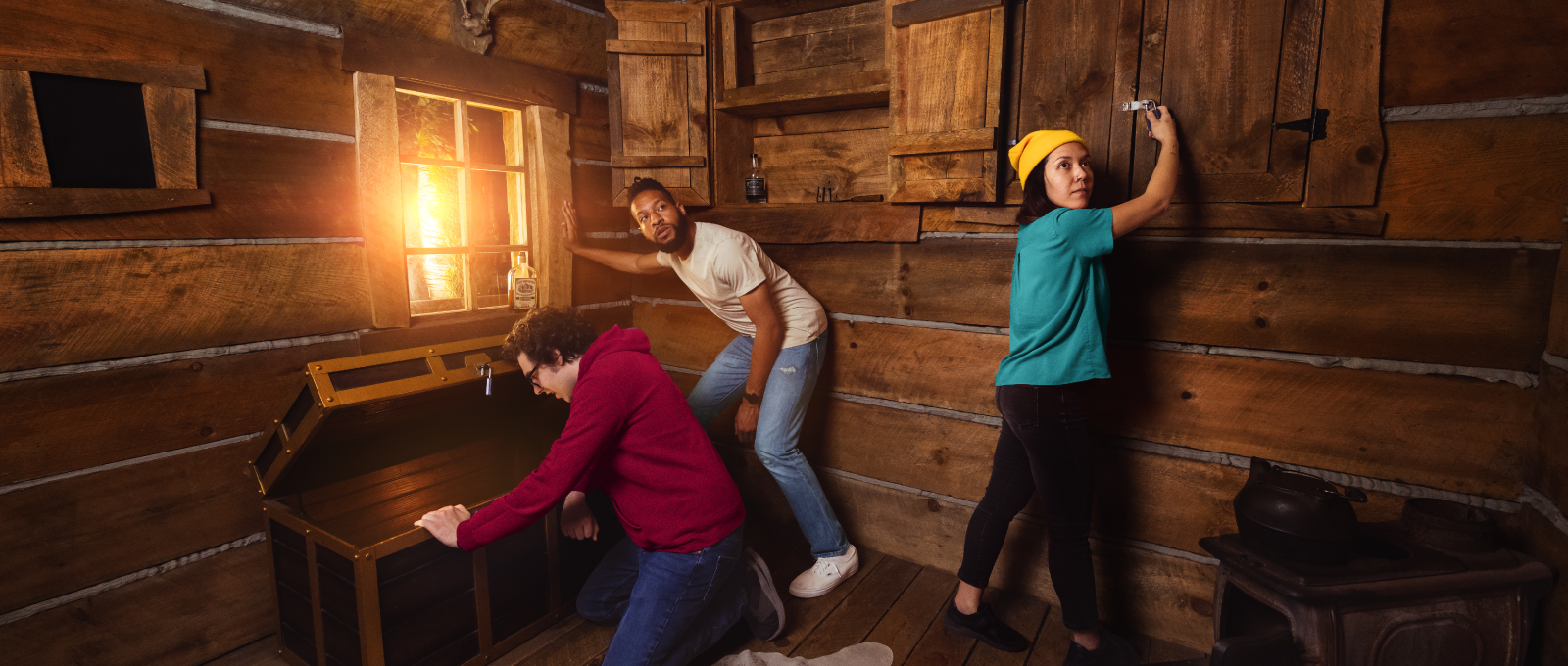Escape Room Minneapolis Mall of America-- Immersive and Enjoyable
Team Techniques: Exactly How to Collaborate Successfully in an Escape Area
Teams have to actively pay attention to each member's understandings, appoint functions that align with specific strengths, and keep regular check-ins to make certain focus and avoid redundancy. By cultivating an atmosphere that values communication and adaptability, groups can considerably enhance their efficiency and success prices.
Establish Clear Communication

To facilitate clear communication, it is crucial to assign a main point of get in touch with for information circulation. Short, focused updates from each team participant can keep the team informed without frustrating them with details.

Appoint Duties Tactically
While clear interaction establishes the structure for efficient teamwork, assigning roles strategically ensures that each staff member's strengths are made use of effectively. In a retreat area scenario, the time-sensitive and intricate nature of obstacles demands an efficient strategy to task delegation. By recognizing and leveraging specific proficiencies, teams can optimize their analytical capacities and improve total performance.
First, analyze the unique skills and attributes of each individual. For instance, somebody with an eager eye for detail might excel in discovering hidden objects, while a logical thinker could be better suited to addressing puzzles - best escape room. It's similarly essential to have a leader who can look after progress, handle the timeline, and make crucial telephone calls when necessary. This role typically needs strong business and interpersonal skills.
Second, make certain that functions are adaptable and versatile. As brand-new difficulties emerge, the group needs to be able to pivot, reapportioning tasks as needed. This flexibility aids keep momentum and prevents bottlenecks that might happen because of stiff role assignments.
Inevitably, a calculated method to role job not only makes the most of the staminas of each staff member yet also cultivates a cohesive setting, driving the team in the direction of a successful escape.
Make Use Of Diverse Skills
Recognizing and using the diverse skills within your team can dramatically raise your efficiency in a retreat space. Each staff member brings distinct toughness to the table, and effectively leveraging these capabilities can accelerate analytic and improve general efficiency. A group member with solid analytical skills may succeed at analyzing complicated codes or patterns, while an additional with keen empirical abilities might quickly find hidden clues that others could ignore.
Encourage group members to voice their insights and ideas promptly, ensuring that all prospective solutions are considered. In addition, designating jobs that straighten with each participant's strengths can avoid traffic jams and ensure that development is continual.
Additionally, variety in skills usually converts to diversity in assuming designs, which is invaluable in a retreat space setting. While some obstacles might call for logical thinking and accuracy, others may profit from imaginative and association More Info of ideas. By acknowledging and leveraging this diversity, groups can resolve a more comprehensive variety of challenges a lot more effectively, thus enhancing their opportunities of an effective retreat.
Manage Time Efficiently

First, designate initial mins for a fast study of the room. Identify visible puzzles and divide jobs based on group participants' staminas, guaranteeing that nobody is idle. Establish inner time checkpoints to evaluate progress regularly; as an example, purpose to have half the challenges fixed by the mid-point of the video game. This practice can assist keep the group focused and stop time from slipping away undetected.
Additionally, avoid one-track mind. If a problem is taking also long, rotate group participants or go on to one more challenge, returning later with fresh viewpoints. Interaction is paramount-- maintain everybody updated on addressed problems and continuing to be tasks to avoid repetitive initiatives.
Last but not least, make use of any kind of hints or hints moderately but purposefully - best escape room. Understanding when to request for help can conserve important time. By sticking to these time monitoring principles, groups can significantly enhance their opportunities of a successful and pleasurable retreat room experience
Debrief and Show
Representation is a crucial facet of group advancement and improvement in the context of getaway areas. When the difficulty is completed, whether efficiently or not, it is vital for more the team to participate in an organized debriefing session. This process allows team members to evaluate their performance, identify toughness, and identify locations for improvement.
Begin the debrief by discussing what went well. Highlight particular circumstances of reliable interaction, analytical, and collaboration. Recognizing these positive actions enhances them and encourages their repetition in future challenges.
Talk about moments of complication, miscommunication, or inefficient methods. Encourage an open and positive dialogue where group participants can share their viewpoints without anxiety of objection.
Conclusion
Finally, effective collaboration in a retreat room is predicated upon clear communication, calculated duty jobs, the reliable application of diverse abilities, and proficient time monitoring. Routine check-ins and structured debriefings are necessary for keeping focus and promoting continual enhancement. By creating a natural and adaptive team setting, the probability of effectively addressing challenges and attaining the objective of leaving the area is substantially improved. This method not only makes certain success but likewise advertises collective growth and learning. read here